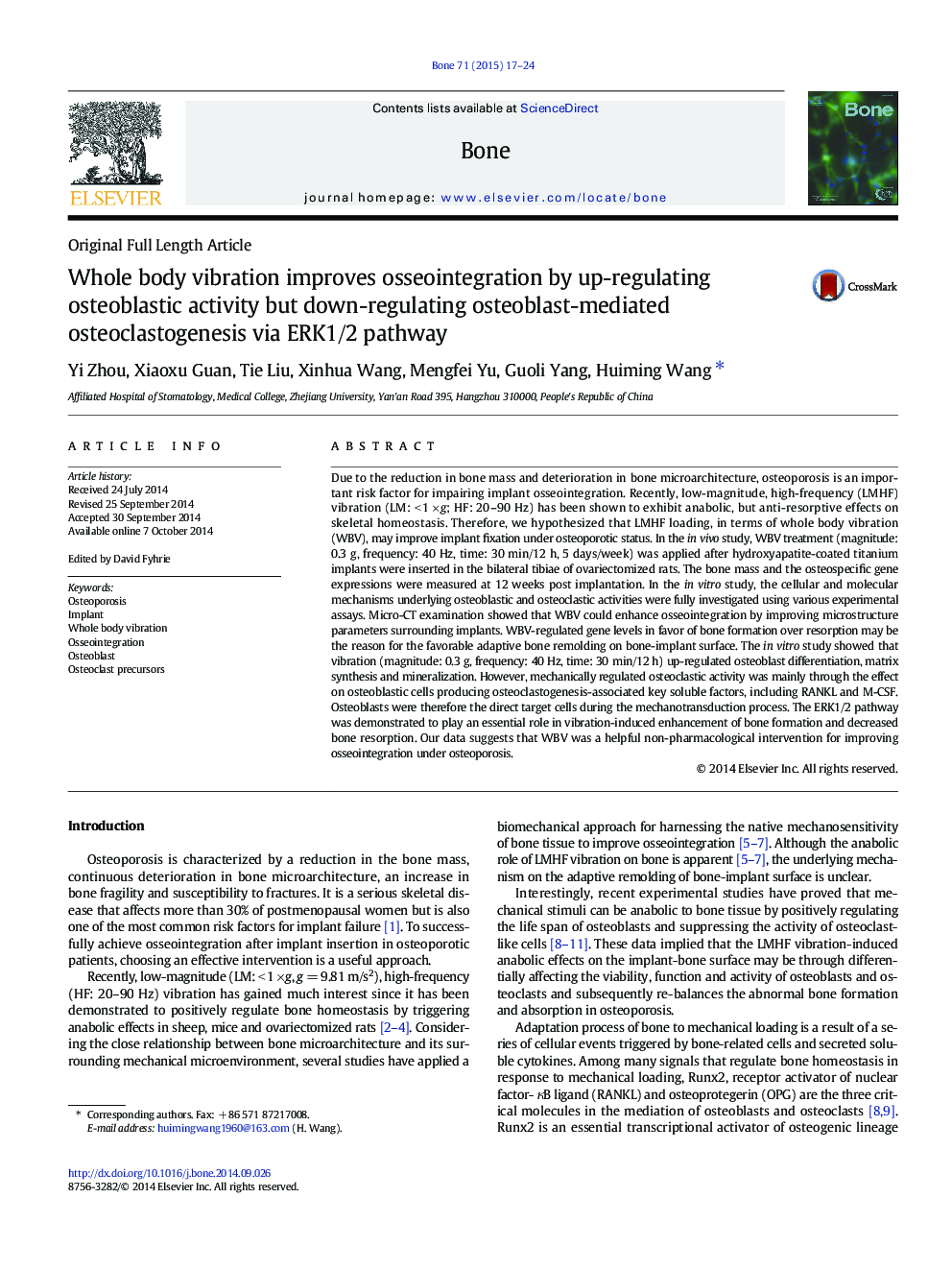| Article ID | Journal | Published Year | Pages | File Type |
|---|---|---|---|---|
| 5889789 | Bone | 2015 | 8 Pages |
Abstract
Due to the reduction in bone mass and deterioration in bone microarchitecture, osteoporosis is an important risk factor for impairing implant osseointegration. Recently, low-magnitude, high-frequency (LMHF) vibration (LM: <Â 1Â Ãg; HF: 20-90Â Hz) has been shown to exhibit anabolic, but anti-resorptive effects on skeletal homeostasis. Therefore, we hypothesized that LMHF loading, in terms of whole body vibration (WBV), may improve implant fixation under osteoporotic status. In the in vivo study, WBV treatment (magnitude: 0.3Â g, frequency: 40Â Hz, time: 30Â min/12Â h, 5Â days/week) was applied after hydroxyapatite-coated titanium implants were inserted in the bilateral tibiae of ovariectomized rats. The bone mass and the osteospecific gene expressions were measured at 12Â weeks post implantation. In the in vitro study, the cellular and molecular mechanisms underlying osteoblastic and osteoclastic activities were fully investigated using various experimental assays. Micro-CT examination showed that WBV could enhance osseointegration by improving microstructure parameters surrounding implants. WBV-regulated gene levels in favor of bone formation over resorption may be the reason for the favorable adaptive bone remolding on bone-implant surface. The in vitro study showed that vibration (magnitude: 0.3Â g, frequency: 40Â Hz, time: 30Â min/12Â h) up-regulated osteoblast differentiation, matrix synthesis and mineralization. However, mechanically regulated osteoclastic activity was mainly through the effect on osteoblastic cells producing osteoclastogenesis-associated key soluble factors, including RANKL and M-CSF. Osteoblasts were therefore the direct target cells during the mechanotransduction process. The ERK1/2 pathway was demonstrated to play an essential role in vibration-induced enhancement of bone formation and decreased bone resorption. Our data suggests that WBV was a helpful non-pharmacological intervention for improving osseointegration under osteoporosis.
Related Topics
Life Sciences
Biochemistry, Genetics and Molecular Biology
Developmental Biology
Authors
Yi Zhou, Xiaoxu Guan, Tie Liu, Xinhua Wang, Mengfei Yu, Guoli Yang, Huiming Wang,
